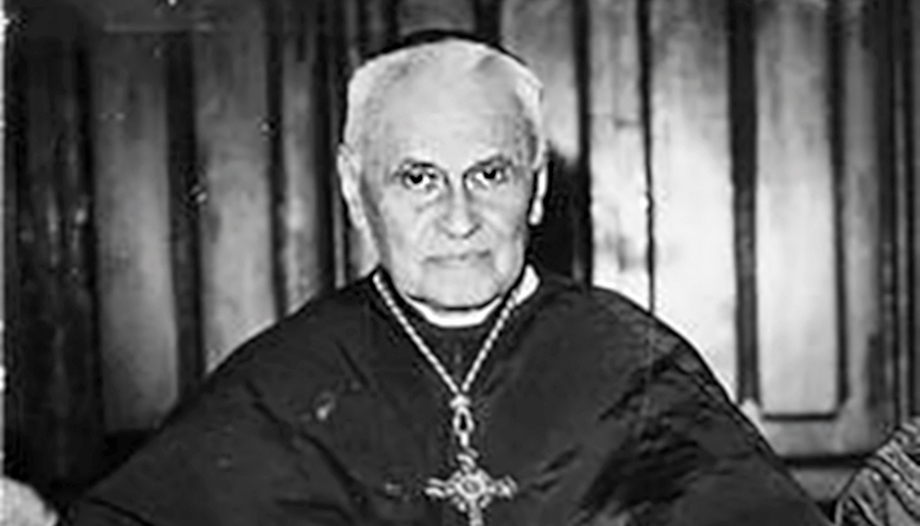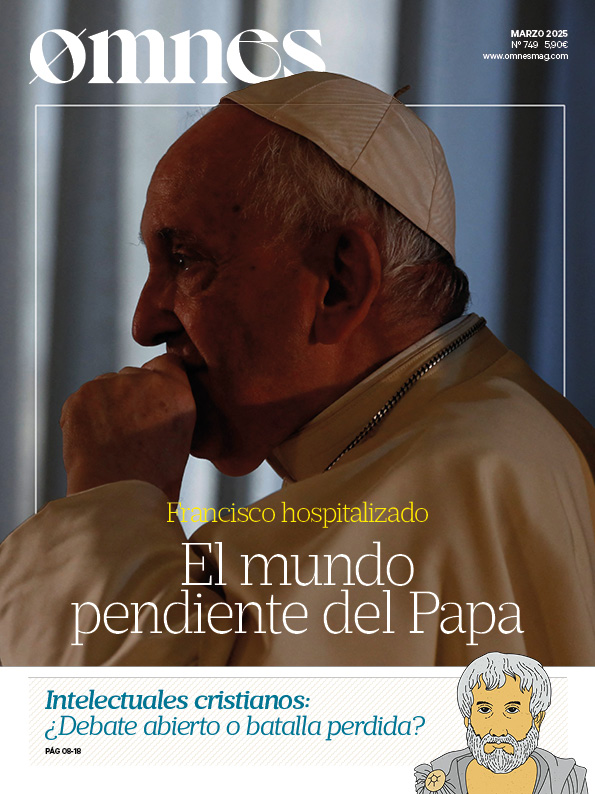In World War I, French seminarians were forced into military service and so, at a stroke, they learned about the reality outside the parishes. The older fellow soldiers were still Christians, but most of their age group knew nothing. The next generation would necessarily be pagan, especially in the proletarian slums, which were full of uprooted people and, in general, with a strong distrust of the bourgeoisie and the Church.
French Catholicism promoted and supported large missions in the 18th and 19th centuries in many African and Asian countries (Vietnam, Cambodia) with the Société des Missions ÉtrangeresThe French protectorate over the Christian subjects of the Ottoman Empire was established by Francis I, and the secular republic continued.
It was clear that there was also a need for missionary work in France. Immediately, the association was extended Young Catholic Workers (JOC, 1923) and its female branch (JOCF, 1924), founded in Belgium by Joseph Cardijn two years earlier (1921). It was a specialized apostolate to gather groups of young workers and form them, to which some chosen priests dedicated themselves.
Cardinal Suhard, Archbishop of Paris (1935-1949) will join this evangelization effort with the Mission of France (1941) and the Paris Mission (1943), and the book France, mission land? (1943), of two YCW chaplains.
Cardinal Suhard
Emmanuel Suhard (1874-1949) is a leading figure of 20th century French Catholicism. Of very humble origins, he stood out for his abilities. He was formed in Rome, having as a companion the future Pius XII (and getting better grades). After many years of teaching at the seminary of Laval (1899-1928) and having refused once, he was made bishop of the small town of Bayeux and Lisieux (1928), then of Reims (1930) and cardinal (1935). Perhaps he was influenced by the fact that he was opposed to the melange of politics and Catholicism of L'Action FrançaiseThe "Catholic Church," which had been condemned by Pius XI in 1926 to the scandal of many traditional Catholics and many bishops.
On May 9, 1940 Cardinal Verdier of Paris died, and on the 10th the Germans invaded France. The Holy See immediately appointed Suhard Archbishop of Paris. A bad start. At first, they arrested him and requisitioned the archbishop's palace. Soon he would be released, it was a warning. Suhard had condemned the Nazi regime before, like Verdier himself. And throughout the period of occupation, he held his place with dignity and protested energetically against abuses. He also had to live with and distance himself from the Pétain regime, to which many Catholics and more traditional bishops had adhered, seeking relief from so many contradictions.
Far from being blocked, he thought that the real solution to so many ills was evangelization. It was more urgent than ever in France, with so many wounds from the revolutionary past, so many devastated dioceses, so many sectors alienated or opposed to the faith. And now humiliated by defeat and occupation. On July 24, 1941, he convoked the assembly of cardinals and archbishops, and presented to them the project of the Mission of France, The seminary was to serve both to distribute the clergy between the dioceses that had the most and those that had the least, and to reach those that had not been reached or had been lost. A seminary was set up in Lisieux and was begun, to this day.
In addition, there was his immense diocese, Paris. On the afternoon of Easter Monday 1943, his secretary passed him a paper of some fifty pages. It was a well-documented report by two YCW chaplains, Henri Godin and Yvan Daniel, on how to evangelize the popular and working class sector. He read it in the evening. He called them, asked them to prepare it for publication. And, directly, he launched the Paris Mission (July 1, 1943), aimed at evangelizing the working class neighborhoods. He looked for priests and lay people, and dedicated some temples, which ceased to be parishes.
The authors and the book
Henri Godin (1906-1944) provided the ideas, an agile style, and many testimonies that make for powerful reading. Yvan Daniel (1906-1986) is said to have taken care of the data and sociological analysis.
Godin did not want to take any position in the new Mission, because he preferred to remain in grassroots work. He looked for other candidates. He died a few months later (January 16, 1944) in a domestic accident: during the night a stove burned his mattress and the fumes intoxicated him. The massive attendance at his funeral testified to the stupendous work he had done in the working class milieus. Yvan Daniel remained at the Paris Mission and published several essays and memoirs.
The book was published on November 11, 1943, and 140,000 copies were sold up to the eve of the Second Vatican Council. It impressed John XXIII (nuncio in France from 1944 to 1953) and John Paul II, who, while studying in Rome, traveled to Paris to learn about this apostolate. The book bore a preface by Guerin, General Consiliary of the YCW in France and at that time arrested by the Gestapo. It has been republished by the editions Karthala (Paris 2014), with an extensive preface by Jean Pierre Guérend, biographer of Cardinal Suhard, and other additions. This is the edition we are quoting.
General approach
They begin by distinguishing three types of populations:
-traditional ones where faith regulates culture and life, even if it does not penetrate much or convert personal behavior;
-de-Christianized areas, with low practice and a Christianity of great occasions (feasts, weddings and funerals); although it may seem little, it is very different from paganism;
-pagan areas, such as some deeply de-Christianized rural areas and, above all, the proletariat, the new uprooted urban class, formed since the mid-19th century in the large industrial cities.
Increasing secularization had caused the most practicing Christians to concentrate in the parishes and separate themselves from the rest: Christian schools, Christian meetings and Christian relationships. But the atmosphere of a normal parish in Paris, with a middle-class tone, is neither attractive nor comfortable for workers, with a different language and customs. Nor was it possible to mix the young people of these parishes with young people of another extraction, with another language and other customs. Parents protested. The authors multiply the examples of initiatives that have only succeeded in extracting some people and families from the working class milieu and integrating them with difficulty into the existing parishes. But in this way they have ceased to belong to their milieu and can no longer be a leaven for this uprooted "mass". But the poor are the Lord's favorites and must be evangelized. How can this be achieved?
It is necessary to think about what a Christian mission is, and what it can be when it is done in these neighborhoods.
The mission
A mission "It is the renewal of Christ's gesture of becoming incarnate and coming to earth to save us. It is the proclamation of the Good News to those who do not know it." (p. 90). "The true missionary is going to build a Church. He is not going to increase the Christian community to which he belonged, he is not going to create a branch." (p. 93).
It is necessary to remember a sociological and ecclesial fact: although conversion is individual, the mission is aimed at creating and establishing "churches", communities, which Christians need in order to breathe as Christians, because the human being (and the Christian) is profoundly social.
"The ultimate end of a mission can only be the re-Christianization of the masses: environments [milieux] and individuals. The mass of individuals thanks to the influence of the environment, the environment thanks to a few elite individuals with the help of all kinds of institutions" (p. 244).
"The first thing is the direct preaching of the Gospel. This is proper to a Christian priest [...]. The second means is personal influence. In the priest it is called addressin the educator, educationin the partner, influence" (p. 245).
"We think that a large part of the elite of the proletariat, with the grace that comes upon them, can be won by preaching, the same as in St. Paul's time. People raise religious problems and although they reproach the Church for many things, they want to know 'what the priests think'" (p. 250). But "a priest who leads two hundred people is terribly overburdened." (p. 245).
Creation of Christian communities
It is necessary to form a small Christian community, because it sustains the faith and, by its very presence, raises the religious question for others. "We allow ourselves to insist on this point of the founding of Christian communities in all natural communities because it seems to us that this is the key to the whole problem of urban missions. It seems to us proven that 80 % of the townspeople can only practice the Gospel in and through these communities. They cannot even live a human life if it is not in community." (p. 253). And they cite in their support Gustave Thibon (Retour au réel, 1943).
Precisely, one of the major causes of de-Christianization was the massive dis-rooting of people from their rural communities of origin, motivated by the crisis of traditional peasant society and the development of urban industrialization. At the same time, they have lost their insertion in society and in the Church. They need to be helped to create communities. Many have already created communities of neighbors, of jobs, of hobbies. It is a matter of reaching out to them. These communities are also the field of development and natural influence of Christians, who thus do not leave their milieu. This must be accompanied by an indispensable work of Christian public opinion in this milieu.
With the standards of other missions
It is good to remember how other peoples have been evangelized. Inspired by what Pius XI said to the missionaries, they insist that it is a matter of transmitting the Gospel and nothing more: "We must not demand as a condition of their incorporation into Christianity that the pagans become Europeanized, we must not ask more of them than they are able to give. It is necessary to be patient and to know how to start again as many times as necessary." (p. 159). Sometimes, it will be necessary to wait until a second or third generation. Slum environments are no easier to convert than older villages.
In addition, "The man of our time is sick, sick to the core of his nature. To pretend that first it is necessary to heal them in order to then converting them to Christianity seems to us a somewhat semi-Pelagian method. They will not be healed (at least the average man) except by Christianity, and being healed will allow Christianity to develop all its effects." (pp. 175-176). "We insist that this Christianity of our converts is not always complete. It is still too human, too impregnated with the enthusiasm of the beginning. It still recognizes, however, the evidence of the action of grace. It is not a Christianity of a faithful, it is a Christianity of a catechumen, a marvelous grain that promises a harvest, but it is only a grain." (p. 176).
Conclusion
In the conclusion, they criticize unnatural individualism and the predominance of money in modern life. But you can't wait to evangelize to get things right. The early Christians also evangelized slaves.
"We have no illusions. The ultimate goal is not to convert the proletariat, but to suppress it, but this is the task of the whole City. We are not only trying to bring the masses to Christ, but to make them cease to be informational masses." (268).
And then?
This mission awakened a wave of authentically Christian generosity, especially in many priests and young people. Many priests went with the French deportees to the forced labor camps in Germany to accompany them. Others formed communities in the working-class neighborhoods.
The intense influence of communism, since the late forties, with its crazy mysticism, its propaganda and its shameless manipulation of institutions, disoriented many Christian aspirations, diverting them towards purely political and revolutionary options. As a symbol, in 1969, the YCW took a turn towards the class struggle, incorporating Che Guevara and Mao as models. This distorted and diverted everything.
All that remains is the sacrificial testimony of so many who did good. And, after the communist hurricane, the same healthy inspirations of the beginning. The proletariat, as the authors wished, has disappeared with progress (and not with communism), although marginalization remains. Evangelization is more necessary today than yesterday, but not for the slums, but for society as a whole. We must go to them, as Cardinal Suhard said then, and Pope Francis repeats today.








